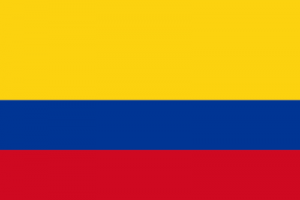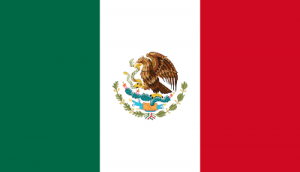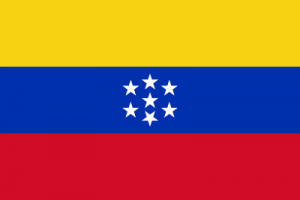
While initially intended to be used as means of fast, secure and transparent payment systems, digital assets have evolved to become the building blocks of a potentially disruptive new economic system. Decentralized finance, also known as DeFi, has been stepping firmly in this regard, with several other industry applications -such as supply chain, health, and more- following in its steps. Below we will explore digital asset adoption in Latin America (LATAM), highlighting the strongest countries of the region.
Reasons behind adoption
Many users throughout first world countries view digital assets as a payment system; others see them as an alternative asset class capable of providing returns unseen in traditional markets. For a third group, digital assets can become a simple safe-haven for purchasing power parity stability and alternative employment sources. In lay-man terms, countries characterized by high inflation and unemployment rates -such as those located in Latin America and Africa- see pegged digital assets as a way to maintain the value of their holdings. Furthermore, they can simultaneously slow down the negative externalities of their respective countries monetary, fiscal and labour policies.
Similarly to our overview on the countries leading the tokenization cause [1], we will take this opportunity to look at those Latin American countries that are distinguished from the rest in the digital asset adoption landscape.
Main Latin American countries adopting digital assets
 Colombia
Colombia
Colombia has been positioning itself as one of the top three countries with the highest adoption in LatAm. Since 2019, it has been showing an almost unparalleled adoption rate, with store of wealth and means of transaction taking the charge as its two main uses. This adoption boom resulted in the government paying closer attention to the new asset class. It is further expanding their financial regulatory testing environment, adding tax-guidelines and AML regulations. At its peak, banking-crypto pilot projects were set out for testing within an oversight sandbox. For instance, Colombia’s biggest bank, Bancolombia, worked with several digital asset firms to test banking services [2].
 Argentina
Argentina
Though not as complicated as other LatAm brother countries, Argentina has several and constant inflationary problems on top of a fictional free floating exchange rate and constant controls. Argentinians have been demanding US dollars as their main currency for store of wealth for decades now. With the introduction of digital assets, Argentina was but one of the most likely candidates for their adoption. Therefore, cryptocurrencies present a relatively simple and secure way to move between currencies. With few international exchanges leading the charge and a user-base growth rate in the 250% for 2020, Argentina has yet to sort regulatory obstacles before fully adopting these digital assets. At the moment, several ramp-on/ramp-off limitations are slowing down adoption, mainly as the result of the legislative and legal treatment of cryptocurrencies [3].
 Brazil
Brazil
Following Coinbase’s IPO and subsequent stock adoption by national banks, digital assets have been gaining more and more notoriety in Brazil. MercadoBitcoin, the digital asset exchange that recently achieved unicorn status, has had a higher trading volume this year so far than the aggregate from 2013 to 2018. With the launch of crypto-indexed funds at the beginning of the year, investors now have the opportunity to diversify their digital asset holdings in a matter of a few clicks, through crypto Exchange-Traded Funds (ETFs). By March, even the SEC equivalent of Brazil’s regulatory agency approved Bitcoin’s ETFs. Despite the impressive growth it’s had adoption-wise, regulation in Brazil has had a hard time keeping up, and has proved unreliable, with inconsistent frameworks [4].
 Mexico
Mexico
The case for Mexico stands out from the rest. While being one of the countries with the highest digital assets adoption rates in America, it still has a reluctant political stance regarding holding, trading and uses of digital assets. A recent joint statement between the Bank of Mexico, finance ministry and banking regulator prohibits financial institutions from carrying out operations with digital assets [5].
A curious adoption case

Lastly, Venezuela can be seen as an exponentiated case of Argentina. Indeed, its political, economic and social situation is known worldwide, but it has found innovative avenues to circumvent some issues within its economy.
“It has become a tool to send remittances, protect wages from inflation and help businesses manage cash flow in a quickly depreciating currency, according to interviews with crypto users and experts.” [6]
Cryptocurrency has proved it can help in sorting a number of structural challenges in Venezuela. Firstly, it helps users hedge against inflation and use digital assets as a remittance service. Furthermore, it has provided an alternative to poor wages. With daily gaming earnings in the hundreds of US dollars, many Venezuelans have turned to cryptocurrency gaming to earn an income – helping them achieve decent wages, contrary to their current average of ~ USD 3/month [7].
Build a Scalable digital asset exchange for LATAM
As demonstrated by the examples above, adoption rates of digital assets across Latin America are increasing exponentially. These are fueled by factors such as the economic situation of the country, expanding technology and seeing new opportunities and demand for what blockchain technology and digital assets can offer.
Scalable’s white label software for cryptocurrency exchanges can help you take advantage of the new opportunities on the market; you can invest in an exchange that will grow and work seamlessly from the get-go. Whether you’re an existing exchange that is looking to scale and upgrade your technology to cater to the needs of your users through better security and transaction speeds, or at the idea-stage of your project, we can help make it a reality.
To find out more about the benefits of a white label exchange solution, check out this post: How to set up a digital asset exchange.
Eager to get started on your project? Get in touch with our team here.
References
[1] “Tokenization: Countries Leading the Cause .” Resources, Scalable Solutions, 30 Oct. 2020, scalablesolutions.io/news/tokenization-countries-leading-the-cause/.
[2] Handagama, Sandali. Colombia’s Crypto Use Soars, and Local Regulators Step In. CoinDesk, 30 Apr. 2021, www.coindesk.com/colombias-crypto-use-soars-and-local-regulators-step-in.
[3] Engler, Andres. Argentines Look to DAI as US Dollar Replacement. CoinDesk, 22 Dec. 2020, www.coindesk.com/why-argentines-are-turning-from-dollars-to-stablecoins-like-dai.
> https://www.coindesk.com/crypto-is-booming-in-economically-challenged-argentina
[4] Handagama, Sandali. Crypto Is Booming in Brazil, but Regulations Lag Behind. CoinDesk, 7 May 2021, www.coindesk.com/crypto-is-booming-in-brazil-but-regulations-lag-behind.
[5] Abraham Gonzalez, Anthony Esposito. Mexico Says Cryptocurrencies Are Not Money, Warns of Risks. Thomson Reuters, 28 June 2021, www.reuters.com/world/americas/mexico-says-cryptocurrencies-are-not-money-warns-risks-2021-06-28/.
[6] Ellsworth, Brian. As Venezuela’s Economy Regresses, Crypto Fills the Gaps. Thomson Reuters, 22 June 2021, www.reuters.com/technology/venezuelas-economy-regresses-crypto-fills-gaps-2021-06-22/.
[7] García, Jorge G. “When Playing Video Games Becomes a Full-Time Job.” EL PAÍS, 12 Aug. 2021, english.elpais.com/usa/2021-08-12/when-playing-video-games-becomes-a-full-time-job.html.
Sources
Chainalysis (2020). The Chainalysis 2020 Geography of Cryptocurrency Report. Chainalysis. Available from: https://go.chainalysis.com/rs/503-FAP-074/images/2020-Geography-of-Crypto.pdf

